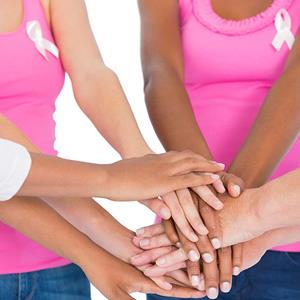10 Things You Can Do to Reduce Your Breast Cancer Risk

Living a healthy lifestyle may be able to reduce the risk of breast cancer significantly. Here are 10 things you can do to reduce the risk of breast cancer.
1. Find out the density of your breasts
One new way to protect yourself is to find out the density of your breasts. Ask your radiologist or family doctor to tell you the density of your breasts. If you have dense breasts ask your doctor to add an ultrasound or MRI to your annual mammogram examination.
2. Exercise frequently
Exercise helps you control your weight. The more fat content in your body, the more estrogen it contains. Estrogen is found to stimulate cell overgrowth and breast cancer. All it takes is half an hour of daily moderate-intensity exercise five days a week.
3. Be familiar with your family’s cancer history, even your father’s
It has been found that about 5 to 10% of all breast cancer cases are hereditary, and have been passed on from one generation to the next. Both your father and your mother’s family history counts equally. Seek the services of a genetics expert if your family history worries you.
4. Minimize your exposure to radiation during medical tests
Medical imaging such as Ct Scans and nuclear medicine examinations use ionizing radiation, which has been found to be a low risk factor. This, of course, doesn’t mean that you should stop getting testing done. Simply request that you receive the lowest dose necessary for accurate results.
5. Restrict hormone therapy
It has been found that long-term use of progestin therapy and combined estrogen increases a woman’s risk of breast cancer by 24%. Speak to your doctor about using hormone therapy to manage symptoms of menopause such as hot flashes. If you must take it, determine the smallest dose, and take it for as little time as possible. If you decide against it, speak to your physician about other options to manage symptoms.
6. Think about breast-feeding
It has been found that women had a 10% reduced risk of death from cancer if they consistently breast feed for the first six months.
7. Eat right every day
You are what you eat, and this is especially true where breast cancer is concerned. For instance, if you consume vegetables and fruits such as carrots, leafy greens, and red peppers (which contain carotenoids) it can reduce your risk of breast cancer by 19%. Phytonutrients such as lycopene, found in tomatoes and sulforaphane, found in cruciferous vegetables, also protect against breast cancer. It is recommended to eat five or more servings of vegetables and fruits a day. Opt for whole grains and limit red and processed meats to reduce cancer risks. Limiting alcohol to a single drink a day can also help.
8. Concentrate on early detection
The earlier breast cancer is detected, the better the chances of recovery. If you do not have a family history of breast cancer, it is recommended to undergo a mammogram and breast exam every year, beginning at the age of 40. Do personal breast exams at home and pay attention to the slightest change in texture or appearance, or in the case of lumps, crusting, bleeding or pain. PINK Breast Center offers free monthly Breast Self-Exam reminders.
9. Determine if you need a previvors plan
A previvor is anyone who hasn’t developed cancer but is at high risk. If you have a high risk of breast cancer, a prophylactic mastectomy, like what Angeline Jolie did when she found out that she had a BRCA mutation, is a drastic option, but not your only one. Some women are advised to rotate between a mammogram and breast MRI every six months. Others have been known to opt for chemopreventive drugs such as tamoxifen to reduce risk, along with lifestyle changes and close monitoring.
10. A game plan for survivors
Exercising, eating right, being vigilant about screening and maintaining a healthy weight can be instrumental in preventing a recurrence. Speak to your physician about what they recommend for your follow up breast cancer screening.